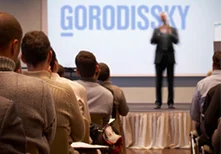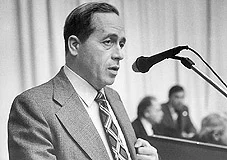Extension Of Patents For Pharmaceuticals And Agrochemicals
19 September 2011In Russia the procedure for extending the validity term of a patent for an invention relating to products which require a special marketing authorization, such as drugs, agrochemicals and pesticides, was firstly introduced in 2003.
At present, the procedure for patent term extension is defined by Article 1363 (2), Part IV of the Civil Code of the Russian Federation (CCRF), which states: «If from the filing date of an application for the grant of a patent for an invention directed to drug, pesticide, or agrochemical, the use of which requires duly granted authorization, and until the date of granting the first marketing authorization more than 5 years have elapsed, the validity term of the exclusive right to the respective invention and the patent certifying this right shall be extended upon a request of the patent holder by the federal executive authority for intellectual property (the Russian PTO)». The procedure for patent term extension is regulated by Item 10 Part III of the Administrative Regulation for patent term extension (hereinafter the Regulation).
TERMS AND DOCUMENTS
In accordance with Article 1363(2) of the CCRF, a request for patent term extension shall be submitted within 6 months from the issue date of the first marketing authorization or the date of grant of a patent, depending on which expires later.
The request shall be submitted in the form set forth by Item 10.7 of the Regulation.
According to the procedure for patent term extension, a number of documents shall be provided proving the fact of obtaining the permission for use of the product and comprising information about the product structure/composition that allows one to assign the invention according to the patent to the product for which the marketing authorization is obtained. As a document proving the fact of obtaining the marketing authorization, it is obligatory to provide a notarized copy of the first State Registration Certificate, wherein the registration date of the preparation is indicated, which is required for calculation of a possible patent term extension, and wherein either international nonpropriatory name (INN) of an active agent of the drug or its complete qualitative and quantitative composition is indicated.
Unfortunately, the Regulation does not clarify what the «first marketing authorization» is.
Our practice shows that the definition of the «first marketing authorization» does not necessary relate to the time of obtaining the permission. That means if the patent relates to a compound per se, the first permission for request is undoubtedly a marketing authorization obtained first in time for a product comprising this compound as an active agent in any preparative form, and, if the substance is manufactured in Russia — an authorization for manufacture of the substance. A slightly different situation is for patents relating to the products which are either some specific forms of an active agent (for example, crystalline forms, isomers, etc.) or preparative forms (for example, forms with a specific release profile of an active agent). In this case, the first marketing authorization for the product is not one issued first in time, but a first authorization which relates either to a product comprising an active agent in a specific form or to a specific preparative form of the product.
For example, the term of the Russian patent No 2214244 relating to a preparative form with sustained release, comprising an agent defined as a group of compounds of a general formula, was extended on the basis of the marketing authorization of July 31, 2009 for product Advagraf (immunodepressant) in the form of prolonged- release capsules comprising Tacrolimus (INN) as an active agent.
The term of the Russian patent No 2079303 relating to a drug in the form of an oinment comprising an agent defined as a group of compounds of a general formula, was extended on the basis of the marketing authorization of March 12, 2010 for product Protopic (immunosuppressive preparation) in the form of an ointment for external application comprising Tacrolimus (INN) as an active agent. With that, none of above permissions was the first one for the substance Tacrolimus.
In addition to the above marketing authorization for the product, there shall be provided, as a rule, data about the structure of an active agent which is designated in the registration certificate by INN. In this connection, it certainly should be noted that the Russian PTO has significantly indefinite requirements for such kind of documents. While within the first years after introducing this provision, it was necessary to provide the certified copy of the technical documentation for the drug submitted for registration procedure. At present it is allowed to submit data about the chemical structure of a compound having a registered INN, the structure being published in «WHO Drug Information» and the international reference book of «WHO International Nonproprietary names for Pharmaceutical Substance. Cumulative List». Furthermore, it is allowed the use of information from reference books such as, for example, Merck Index, as well as information from the documentation for the drug published on the official FDA website.
As a rule, the above documents are sufficient for obtaining a positive decision on the request for term extension of a patent relating to a compound per se.
However, if the matter is about a patent relating to a product which is characterized by some physical characteristics, for example, relating to the crystalline form of a known drug characterized by
Further, in addition to the above documents, in accordance with Item 10.9 of the Regulation, there shall be submitted an explanation regarding the claims. In particular, for every claim, a feature combination corresponding to the characteristics of the product shall be indicated.
TERM OF EXTENSION
A possible patent term extension is calculated as a period from the filing date of an application (for an international application — the international filing date) to the date of obtaining the first marketing authorization minus 5 years. Thus, a patent term extension is not provided for
SELECTION OF A SUBJECT MATTER FOR TERM EXTENSION
In accordance with Items 10.5 and 10.6 of the Regulation, an invention relates to a drug, pesticide, or agricultural chemical, if the invention is characterized as a compound or a group of compounds of a general structural formula, or is characterized as a composition.
Thus, the national legislation limits a range of patents which are allowed for term extension, to patents relating to a product per se. Indeed, the practice shows that, if a patent relates to a group of inventions inclining, for example, a compound, a pharmaceutical composition comprising the compound, a method for producing the compound, and a method for treating, the term of the patent will be extended only for claims relating to a compound and pharmaceutical composition. Somewhat different situation is for claims relating to the subject matter «medical use».
In spite of the fact that the Regulation never mentions such subject matter in relation to drugs, in practice, claims relating to a medical use are included into the claims in relation to which the term of the patent is extended. The term of the Russian patent No2260013, for example, was extended based on the marketing authorization for drug BRIDAN (selective antidote against myorelaxants) comprising Sugammadex (INN) as an active agent in the form of a solution for intravenous administration, in regard to, inter alia, claim 6 relating to a use of the compounds for therapy.
The term of the Russian patent No2114860 was extended based on the marketing authorization for ATRIANCE preparation (antitumor medicine) in the form of a solution for intravenous infusion comprising Nelarabine (INN) as an active agent, in regard to, inter alia, claims 11–13 relating to a use of the compounds for therapy.
Claims in relation to which the term of the patent is extended are maintained in their full scope, even if they do not relate to a single invention for which the marketing authorization is issued, but also to a group of inventions, for example, to a group of compounds defined by a general formula.
SELECTION OF THE PATENTS FOR THE TERM EXTENSION PROCEDURE
It is a common situation in practice where a patent holder has more than one valid patent relating to a registered product, for example, a patent for a compound per se, a patent for a pharmaceutical composition (in a general form), a patent for a drug, and a patent for a specific formulation. Current legislation directed to the procedure of patent term extension does not have any provisions regulating such a case. Nor there is a prohibition against term extension for more than one patent on the basis of one marketing authorization for a product.
The absence of the prohibition against the term extension for more than one patent is also supported by the current practice. For example, on the basis of the marketing authorization for drug ATRIANCE (solution for infusion) comprising Nelarabine (INN) as an active agent, the terms of two Russian patents were extended:
- No2112765 relating to a pharmaceutical composition against Varicella zoster virus (VZV);
- No2114860 relating to a group of compounds of a general formula and an antitumor pharmaceutical composition.
- No2112765 relating to a pharmaceutical composition against Varicella zoster virus (VZV);
- No2146132 relating to a pharmaceutical composition showing an activity with respect to a calcium receptor;
- No2147574 relating to a group of compounds of a general formula and a pharmaceutical composition showing an activity with respect to a calcium receptor;
- No2195446 relating to a specific compound and a pharmaceutical composition modulating a calcium receptor activity.
On the basis of the marketing authorization for drug Mimpara (film coated tablets) comprising Cinacalcet (INN) as an active agent, the terms of three Russian patents were extended:
DOCUMENT CERTIFYING PATENT TERM EXTENSION
Upon a positive decision on the basis of consideration of a request for patent term extension, an Enclosure to a patent is published. The Enclosure comprises an entry about the extension of the term of the exclusive right for the invention with indicating independent and dependent claims to which the term extension is applicable, and the date to which the term is extended.
Information about patent term extension are entered into the State Registry and published in the Official Bulletin of the Russian PTO. As a conclusion, it is worth to note that an introduction of the provision relating to a patent term extension into the Russian national legislation and a majority of CIS countries is a significant positive step toward harmonization of the national patent legislations with international treaties, and more effective execution of rights of patent holders in the field of the pharmaceutics and agrochemicals. However, the procedure of a patent term extension in Russia and some CIS countries needs to be further improved, in particular, by addressing the most actual issues and amending and supplementing legislation regulating thereof.









